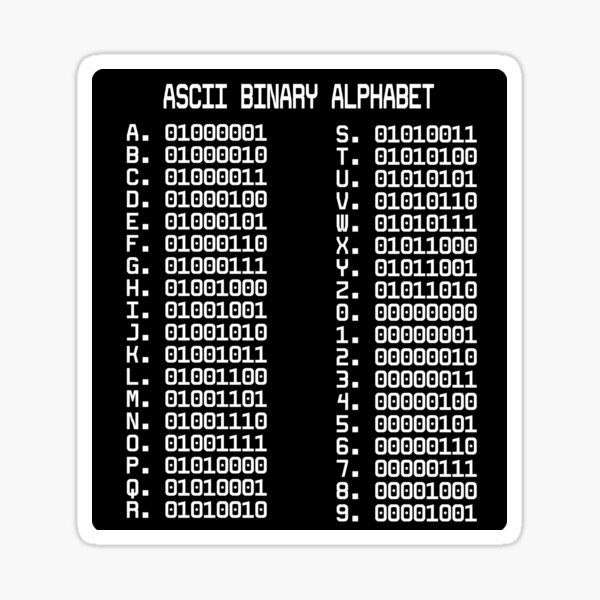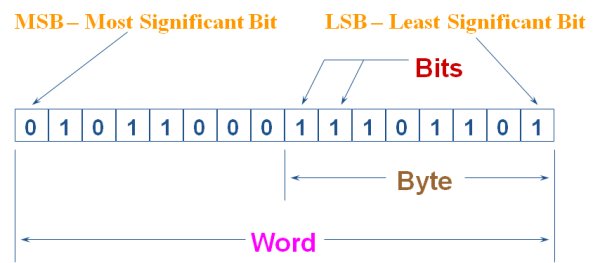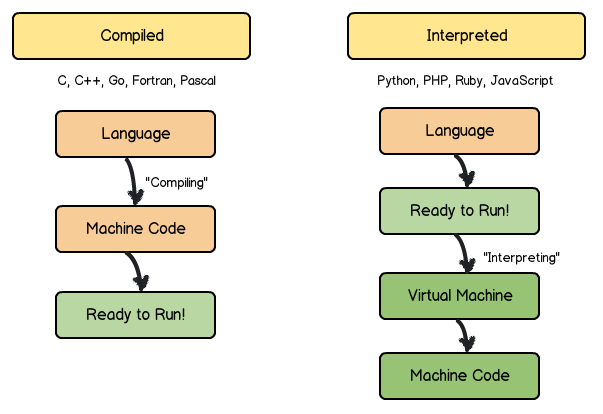Unlocking the Code: A Beginner's Guide to the Digital Frontier
The Internet's Binary Dance
Table of contents
- The Origin of Binary Code
- How 0s and 1s Are Exchanged Through the Internet
- ASCII and the Evolution of Programming Languages
- Interpretation or Compilation with Programming Languages
- Understanding and Building Operating Systems
- How C++ Runs on Your OS
- Programming Paradigms: A Conceptual Tapestry
- Syntax and Semantics: The Building Blocks of Programming Languages
- Visualizing Code Execution with Python Tutor for Beginners
- Embracing the Mindset of a Software Developer
- Resources for Continued Learning
- Wrapping Up
📝 Introduction for Beginners: This article is crafted to introduce programming concepts in a way that's accessible to beginners. It aims to simplify complex ideas into understandable terms. While this introduction serves as a great starting point, those who are considering programming as a career are encouraged to explore the subject further. Remember, this introduction is not just cool; it's a solid foundation to build upon.
🚀 Flexibility in Programming: The programming language used in this article, C++, was chosen for its relevance to the concepts being explained. However, it's important to note that the principles and concepts presented here are universal and can be applied across various programming languages. Whether you're a beginner or an experienced programmer, the core ideas remain the same, and understanding them can significantly enhance your programming skills. This approach allows for a broader understanding of programming concepts, making it easier to adapt to different languages and programming paradigms.
ℹ️ Note on Sources: All images featured in this article are sourced from different websites, and their sources are listed at the end of the article. This approach ensures that the focus remains on the content, enhancing the reading experience for all.
The Origin of Binary Code

The binary code, a fundamental concept in computing, traces its origins back to ancient civilizations like Egypt and China, where rudimentary binary systems were used for counting and religious purposes. However, the modern binary system as we know it, consisting of only 0s and 1s, was introduced by Gottfried Wilhelm Leibniz in the 17th century. This system laid the groundwork for digital computing, with further developments by George Boole and Claude Shannon leading to the creation of the first modern computers.
How 0s and 1s Are Exchanged Through the Internet
The internet operates on a vast network of interconnected devices, each capable of sending and receiving binary data. When you visit a website, your computer sends a request to the server hosting the website. In a very low-level, this request is a series of 0s and 1s, which the server interprets and responds to by sending back the requested data, also in binary form. This process is made possible by the TCP/IP protocol suite, which defines how data should be packaged, addressed, transmitted, routed, and received across the internet.
🎥 Copper Demonstration (Optional)
Copper uses copper wires to transmit data via electrical pulses.
🎥 Fiber Demonstration (Optional)
Fiber transmits data using pulses of infrared laser light.
ASCII and the Evolution of Programming Languages


The American Standard Code for Information Interchange (ASCII) was a crucial development in the evolution of programming languages. ASCII is a character encoding standard that assigns a unique number to each character, allowing computers to represent text in a way that can be processed and displayed. This standardization made it possible to write programs that could manipulate text, laying the groundwork for the development of high-level programming languages.

Interpretation or Compilation with Programming Languages
Programming languages can be broadly categorized into two types: interpreted and compiled languages. Interpreted languages, such as Python and JavaScript, are executed line by line by an interpreter at runtime. This allows for more flexibility and ease of debugging but can be slower than compiled languages. Compiled languages, like C and C++, are translated into machine code by a compiler before execution. This process results in faster execution times but can make debugging more challenging.

Understanding and Building Operating Systems
Operating systems (OS) are foundational software that manage hardware and software resources on a computer, providing an interface for users to interact with the computer and execute applications. Developing an OS requires a deep understanding of low-level programming, including system calls, memory management, and process scheduling. Typically written in languages like C and C++ for their efficiency and control over hardware, operating systems are crucial for managing computer resources, providing services for applications, and ensuring the security and stability of the system. They handle tasks such as process scheduling, memory management, file system management, and device management, making them indispensable for the smooth operation of computers.

Memory management is a key aspect of operating systems, enabling efficient utilization of memory and ensuring that multiple processes can run simultaneously without interruptions. This involves both memory allocation, where a portion of main memory is allocated by the program’s request, and memory deallocation, which frees the memory that’s no longer needed by the program. Dynamic memory management, supported by languages like C++, allows programmers to have direct control over memory allocation and deallocation, offering the flexibility to tailor an application’s memory consumption for high performance, especially in resource-constrained environments or real-time systems. This skill is increasingly valuable as we advance into a future of distributed systems, where optimizing performance with memory management benefits not just local applications but also the performance of every machine and component in the system

How C++ Runs on Your OS

To simplify the explanation of how C++ programs run on an operating system, consider this breakdown:
Writing the Program: You start by writing your C++ code in a text editor and save it with a
.ccextension. This is your source code.Compiling the Code: The compiler takes your source code and translates it into machine code, which is stored in an object file with a
.oextension. This step checks for syntax errors.Linking the Code: The linker combines the object file with any necessary libraries to create an executable file. This file is what you run on your operating system.
Running the Program: When you execute the program, the operating system loads the executable file into memory. The CPU then runs the instructions in the program one by one.
This process involves writing the code, checking for errors, linking it with libraries, and finally running it on your computer.
Programming Paradigms: A Conceptual Tapestry

Programming paradigms are the styles or ways of programming that offer different approaches to solving problems. These include procedural, object-oriented, functional, and declarative paradigms. Each paradigm has its own set of principles and techniques, influencing how developers think about and structure their code.
| Paradigm | Description |
| Procedural Programming | Procedural programming is akin to following a recipe – a step-by-step set of instructions that the computer executes to achieve a desired outcome. This paradigm is the foundation of most programming languages and is often the starting point for beginners. |
| Object-Oriented Programming (OOP) | Object-Oriented Programming (OOP) is a concept that revolves around creating objects – self-contained entities that encapsulate data and behavior. This paradigm encourages modular and reusable code, making it easier to develop and maintain complex applications. |
| Generic Programming | Generic programming is a powerful technique that allows you to write code that can work with a variety of data types. This paradigm promotes code reusability and efficiency, reducing the need for duplicating code for different data types. |
C++ seamlessly integrates these paradigms, empowering developers to choose the most suitable approach for their projects.
Syntax and Semantics: The Building Blocks of Programming Languages
Syntax refers to the set of rules that define how programs written in a language must be structured. Semantics, on the other hand, deals with the meaning of these structures. In C++, the syntax includes rules for declaring variables, defining functions, and using control structures. The semantics involve understanding how these constructs are interpreted by the compiler and executed by the computer.

Visualizing Code Execution with Python Tutor for Beginners

As you progress in your programming journey, understanding how your code executes step by step can significantly enhance your learning and problem-solving skills. A fantastic tool for this purpose is Python Tutor, which not only supports C++ but also a wide range of other programming languages. Python Tutor offers a unique step-by-step visual debugger that allows you to see how your code is executed line by line, making it easier to grasp complex concepts and identify errors.
Python Tutor has been used by millions of people worldwide to visualize over 200 million pieces of code, making it a highly reliable and effective tool for learning and teaching programming. It's particularly useful for beginners looking to grasp the fundamentals of programming and for more experienced developers seeking to refresh their understanding of code execution.
To use Python Tutor for C++:
Write or paste your C++ code into the editor.
Click on "Visualize Execution" to start the visualization process.
As your code executes, Python Tutor will display each step, showing you the state of variables, the call stack, and the flow of execution. This visual representation can help you understand how your code works, identify where errors occur, and learn how to optimize your code.
Incorporating Python Tutor into your learning process can significantly enhance your understanding of C++ and programming concepts in general. It's a powerful tool that bridges the gap between writing code and understanding how it works under the hood.
Embracing the Mindset of a Software Developer
Becoming a proficient software developer requires more than just technical skills – it also demands a specific mindset. This mindset encompasses qualities such as problem-solving, attention to detail, perseverance, and a commitment to continuous learning.

As you delve into programming, embrace this mindset and cultivate a growth mindset. Seek out challenges, embrace feedback, and continuously strive to improve your skills. Remember, coding is an art form, and every line of code you write is a brushstroke on the canvas of your digital masterpiece.
Resources for Continued Learning
There are numerous resources available for those looking to deepen their understanding of programming and software development. These include online courses, books, tutorials, and forums where developers can share their knowledge and experiences. Some notable resources include free programming books available on GitHub, online platforms like Coursera and Udemy, and community forums like Stack Overflow.
FreeCodeCamp: Offers a self-paced learning path with interactive coding challenges and projects. It's an excellent resource for beginners and experienced developers alike, covering a wide range of topics in web development. The platform also includes a community forum for support and networking.
W3Schools: A comprehensive resource for web development, offering tutorials on HTML, CSS, JavaScript, and more.
Ultimate Coding Resources List: A curated collection of the best resources for programming, web development, computer science, and more, covering a wide range of topics from learning platforms and coding challenges to tools and books. This list includes resources for both beginners and experienced developers, offering a comprehensive guide to enhancing coding skills, preparing for technical interviews, and staying updated with the latest trends in the tech industry.
🎥 For those who prefer the video format (Optional)
Wrapping Up
The binary code, originating from ancient civilizations, laid the groundwork for digital computing.
Binary data is exchanged through the internet using the TCP/IP protocol suite.
ASCII played a crucial role in the evolution of programming languages, allowing for text representation and manipulation.
Programming languages can be categorized into interpreted and compiled types, each with its own advantages and challenges.
Operating systems manage computer resources and provide an interface for user interaction.
C++ programs undergo a series of steps from writing to execution on an operating system.
Programming paradigms offer different approaches to problem-solving, including procedural, object-oriented, generic programming, and many more.
Syntax and semantics are fundamental to understanding how programs are structured and executed.
Tools like Python Tutor help visualize code execution, aiding in understanding complex programming concepts.
Cultivating a growth mindset and continuous learning are essential for software developers.
🎶 MUSIC BIT: "Cowboys And Chorus Girls" is a delightful piece that captures the essence of the American West, blending the romanticized cowboy lifestyle with the vibrant energy of the chorus girls. The song, filled with nostalgia and a touch of melancholy, paints a picture of a bygone era where the cowboys and chorus girls danced under the stars, their stories intertwined with the rhythm of the music. 🤠💃
As you listen, you're transported back to a time when the West was young, and the cowboys and chorus girls were the heart of the show. The melody, reminiscent of the early 20th century, evokes a sense of longing for simpler times, yet it also celebrates the resilience and spirit of those who dared to dream and make their mark on the world. 🎵🌟
So, sit back, relax, and let "Cowboys And Chorus Girls" take you on a musical journey through the past, reminding us of the enduring allure of the American West and the timeless beauty of its stories. Until next time, keep exploring the world of music and the stories it tells. 🎶👠
Goodbye until the next article in 2 weeks. 👋
🔗 SOURCES
https://medium.com/@astermanuelg/blurred-lines-is-ruby-an-interpreted-language-2d3d6bca3d37
https://www.scaler.com/topics/architectures-of-operating-system/
https://gwaxprograms.blogspot.com/2016/02/programming-language-paradigms.html
https://www.reddit.com/r/Cplusplus/comments/14fnr7b/beginner_mindmap/
https://drgloriapetruzzelli.com/2016/07/17/are-you-a-tortoise-or-a-hare-growth-vs-fixed-mindset/

